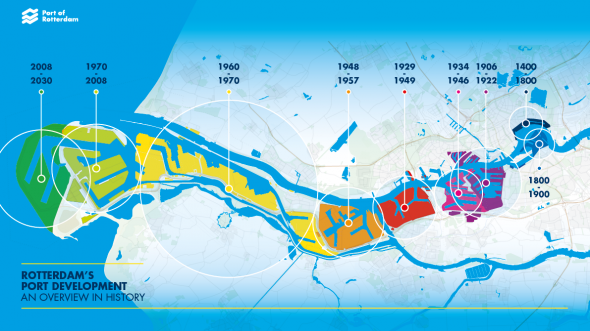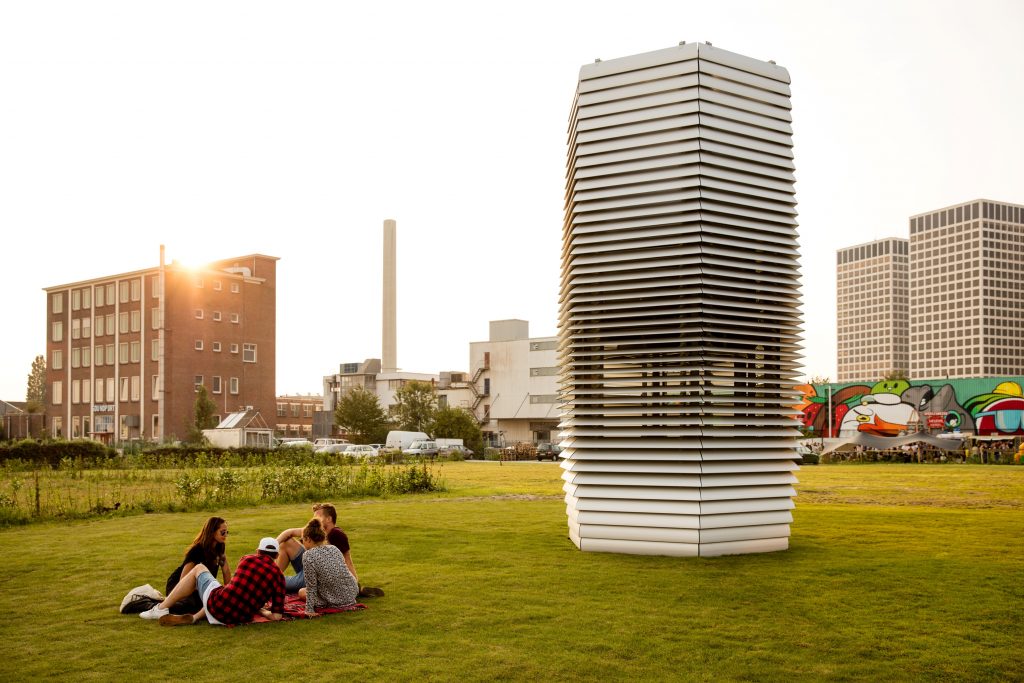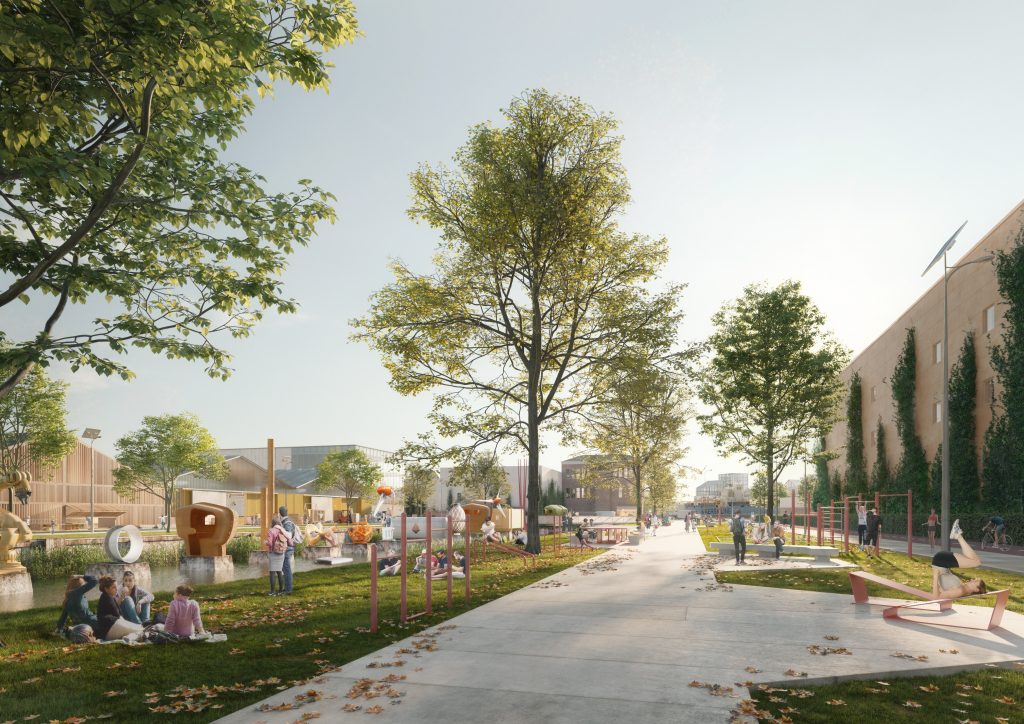Thank you very much for accepting this interview for PORTUS Portrait, focused on Rotterdam.
We would like to talk with you about the future of Rotterdam as a port city territory, focusing in particular on the overall planning process of the Merwe-Vierhavens (M4H) area, a former port area and current Makers District that is home to creative entrepreneurs, where port and the city collaborate towards greater sustainability.
INTERVIEWER | Paolo DE MARTINO
Could you tell us about your role within the Municipality of Rotterdam? What are the main challenges (and scales) the port city of Rotterdam is facing at the moment and also what kind of opportunities do you see there?
INTERVIEWEE | Walter DE VRIES, Urban development planner, Municipality of Rotterdam
I studied architecture and urban design in Delft. I am an urban planner for the Municipality of Rotterdam and I cooperate a lot with the Port of Rotterdam Authority. To be more specific, on behalf of the port authority and municipality I am responsible for the overall planning process of the Merwe-Vierhavens (M4H Rotterdam) area, which is an old port area on the North bank of the River Maas developed in 1910. We are preparing an “extreme make over”. What makes this area interesting is that it doesn’t follow the old model of “port out-city in”. It is a new cooperation between the city and the port. The city has some land there and the port also owns less than half of the area.
We are cooperating to establish a new innovative district, the ‘Rotterdam Makers District’, which will contribute to the big challenges that the port and also the city are facing. How can we make a more sustainable port? We brought a lot of energy in the 20th century to making it the biggest port of the world and it still today the biggest in Europe. A clean, smart and sustainable port is much more important nowadays, carbon free in 2050. The city of Rotterdam and especially the Port of Rotterdam and its industries also have to contribute to the Paris agreement. We face a very big task to make the port, with its tremendous fossil based industrial cluster, carbon neutral other business models. We must be very aware that if we do not innovate, then the port will be under very, very big pressure. We see this already with people going to court arguing that Shell has to respect the climate agreement of Paris. The pressure on the port industry is increasing and the Port Authority is of course not responsible for the industry itself. The Port Authority is a landlord. However, the old model of just providing space for ships and ground for industry is an old fashioned way to run the port. So, the Port Authority feels responsible for boosting innovation in the port area, and from that perspective, the Port Authority rediscovered the potential of the M4H area.
The municipality and the Port Authority think that this is an area where innovation can happen because it is close to the inner city, close to public transport, close to education facilities, close to the Universities of Delft and Rotterdam. And space to experiment. Such innovation hubs or innovation districts are not established in the Botlek area or in Maasvlakte. They need to be connected to the city system. So, the M4H area, together with the already established RDM Rotterdam, is at that interesting interface between city and port. The city brings in knowledge about how to make attractive public spaces, how to provide education facilities, how to deal with cultural heritage, and how to organize a participation process. On the other hand, the port brings financial power, the whole international network of multinationals that are settled in the port, and they also have their own innovation program. So we said to each other: “We need each other, we need the competencies of both parties to establish here an innovation district that contributes to the renewal of the Port of Rotterdam”.

INTERVIEWER | Paolo DE MARTINO
What, do you think, will be the impact of port development on the cities and territories nearby?
INTERVIEWEE | Walter DE VRIES, Urban development planner, Municipality of Rotterdam
Originally, the port and city were closely connected. On the old maps of Rotterdam, you can see the water city outside the dykes where the port was established, and the more lively city on the North side of the dyke where the Church was established and the dwellings and the shops were located. In the 19th century, of course, the new waterway gave an enormous boost to the development of the Port of Rotterdam, and after the second world war, it grew very fast and the port became bigger and bigger.
The port nowadays has two main pillars: the industrial cluster, so the chemical industry, and the logistics a cluster as a global hub handling goods from all over the world. The port authority is today also looking for different things. On the one hand, they want to stay an energy port, but with other kind of fuels, for example hydrogen. This will be the most important new sustainable fuel for the industry and the port of Rotterdam is investing a lot in this new energy system. The logistic cluster will maybe become a more regional cluster because the prices of transport will increase in the future when international couriers have to pay taxes on fuels. The transport lines are very, very long from China or from the East to the West. Incomes in the east are also increasing so the advantage of producing in the East and transporting to the West will diminish in the future. In addition, our economy is calling for smaller scale production and diversified for different types of customers.
INTERVIEWER | Paolo DE MARTINO
What kind of different scenarios do you imagine to improve environmental sustainability and to mitigate the impact that port industry has on the city in terms of environmental pollution?
INTERVIEWEE | Walter DE VRIES, Urban development planner, Municipality of Rotterdam
There is a need to bring back production to Europe. Due to global uncertainty we do not know what will happen in China in 20 or 30 years and this reinforces the idea of having Europe more independent from an economic and productive point of view. From this perspective the Port of Rotterdam will probably also become also a production hub on the scale of Europe. And the interesting aspect of this last aspect is that it will provide more sustainable employment for the city and the region of Rotterdam.
At the moment the pressure of the port on the region is very high and since port automation less people from the region are working in the port. So, the relation between added value and negative impact is unbalanced. But if the port will become a more regional hub this relation between benefits and negative impacts will be rebalanced. This is also where the M4H area and RDM come in. We called it the Makers District because “making” is an important new concept in the European economy. What we are trying to invent in the Makers District is a new type of industry, a more sustainable (manufacturing) industry that will contribute to making the ports less dependent on only logistics and fossil fuel energy. On the contrary, the Makers District will provide more sustainable employment for the city and the region.

However, when we talk about sustainability in relation to ports there are quite often some misunderstandings. People used to think that having a sustainable port would mean to have zero environmental impact. A sustainable industry can still have very high impacts on the surroundings (e.g. noise). Therefore, a sustainable economy does not mean zero pollution, especially when we are in a transition period where we have both the industrial cluster and the development of new economies related to biomass for example or hydrogen. The Port Authority is convinced that in the next decades more and more space will be needed to host this transition. So, people need to be aware that a sustainable port will need space to make the transition happen and this can still have some negative impacts on the city and the region. But we hope that this kind of new industry will bring more balance between profits and negative impacts.

INTERVIEWER | Paolo DE MARTINO
What does the city of Rotterdam contribute in making the Port more attractive than others? What elements do you think the Port of Rotterdam contributes to the City to make it more competitive and sustainable than others?
INTERVIEWEE | Walter DE VRIES, Urban development planner, Municipality of Rotterdam
The Port Authority and the companies within the port of course need to establish their license to operate, especially when they produce a lot of noise or a lot of traffic. In the past a large percentage of employees living in Rotterdam were also working in the port or port-related industry in some ways. Automatization has changed this making the license to operate of the port more vulnerable. When you work in the port you accept the system of the port and everything that this brings: it provides your income. But when the connection is gone you see the port only as something that produces noise and trucks. Providing more sustainable employment is therefore one of the main ambitions of the port to contribute to making the city more competitive and attractive. This is also the reason why the Port Authority and the University of Applied Science and Technical College (vocational education) established the RDM Campus to teach skills that are needed in a port and in the Port of Rotterdam particularly.
That is part of the answer. For the second part I would like to refer to an event, Wereldhavendagen (World Port Days), that takes place in Rotterdam the first week of September and this is one of the biggest events in the Netherlands. You can see grandparents with their grandchildren visiting ships, doing excursions, looking at demonstrations, eating an ice cream and looking at the fireworks at the end of day. So, the port shows them its best side, and this is very important to give to the city, to citizens the feeling that they live in a port city and that they are proud of the port.
INTERVIEWER | Paolo DE MARTINO
We would also like to know more about your vision of social and cultural aspects in port city development. Despite the current discussions regarding port-city integration, port and city quite often tell two different stories, also because they belong to different planning logics. What do you think is needed?
INTERVIEWEE | Walter DE VRIES, Urban development planner, Municipality of Rotterdam
When you talk about cultural and social aspects, I think one of the important things is that the port and city in Rotterdam have come to understand that a change cannot happen without collaboration. This is a cultural assignment of course for port and city, but should also be reflected in the governance and in the way port and city work.
Since 2004 the Port of Rotterdam is independent, it became a publicly owned company with two shareholders: the city at 2/3% and the Dutch Government at 1/3%. The port has a lot of freedom to organize port operations and as landlord. The municipality sets up the public framework (like zoning plans). However, considering the big challenges we are facing, the Port Authority and the port companies need the city and this is opening up new approaches and forms of collaborations within the existing institutional structure.
INTERVIEWER | Paolo DE MARTINO
Is there anything else that you would like to share with us in light of the Port of Rotterdam’s leadership role globally and in relation to the port city territory?
INTERVIEWEE | Walter DE VRIES, Urban development planner, Municipality of Rotterdam
I think that the port of Rotterdam is still a successful and strong cluster with a lot of power, and what I hope is that we use our brains and the money to make the next steps. The municipality and the Port Authority have a social responsibility to change, so I really hope that change will come despite the economic, cultural and institutional constraints.
Head Image | Rotterdam Makers District – RDM (right) and M4H area (left). (© Programmabureau M4H; Source: Gemeente Rotterdam).